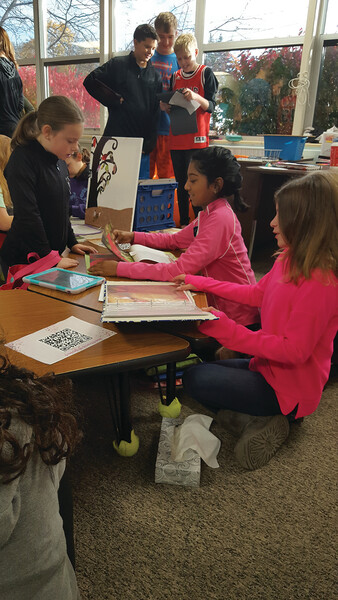Let's be honest: It isn't hard to be skeptical of the personalized-learning movement. I know I have been at times, both as a parent and as an education journalist.
This isn't because there's anything objectionable about the basic premises of personalized learning. Who wouldn't want schools to attend more closely to students' individual needs and skills; to use advances in technology to free students from one-size-fits-all instruction and enable them to explore more meaningful curricular pathways; to empower students to take more control over their own learning; and even to give them time to pursue their own interests?
The common reasons for skepticism, I think, are more closely tied to the details of execution. Anybody who's been in the education field for a while has heard horror stories about personalized-learning initiatives implemented on the cheap, or without enough think-through. (As somebody who has worked closely with teacher-writers, I've definitely heard my share.) In certain contexts, personalization can sound like a byword for ham-handed technological integration, or for administrative kowtowing to instructional fads.
And even beyond examples of dubious implementation practices, there are legitimate questions of balance and degree when it comes to personalization. How much independent, personally oriented learning is really constructive for students? At what point do you jeopardize content knowledge or lose important aspects of a common curriculum? How much control should teachers be willing to give up? Is it wise to farm out significant portions of instruction to software programs or student-driven projects? And perhaps most important, what kinds of structures and resources are needed to support this type of instruction?
I won't say that the articles in this issue of Educational Leadership answer all these questions—but they do raise them in a number of different contexts. And it is in this spirit of inquiry that I think this issue makes an important contribution to discussions around instructional change. In exploring what makes personalization work in real classrooms, the articles go beyond hyperbolic claims and blind-trust solutions, instead offering thoughtful examples and re-examinations that just might make you think anew about the meaning of personalized instruction and the possibilities it offers.
It's hard not to be inspired, for example, by Chinese-language teacher Meng Li Lusardi's description of how she enhanced an independent-learning project in her classroom in part by providing more conscientious structure and support. To nurture students' "expressions of individuality," Lusardi argues, personalized learning must be done "intentionally and purposefully," combining high expectations with strong support.
Similarly, John Spencer describes how he strengthened "Genius Hour" in his classroom by undergirding it with a design thinking framework. "In a successful Genius Hour format," he writes, "the teacher works as an architect, designing the invisible ecosystem in which student voice and agency can thrive."
Other authors take a slightly different tack in emphasizing that personalization is hardly a matter of simply letting students "have it their way." Teacher Larry Ferlazzo argues that personalized-learning efforts have little chance of success if educators don't first take steps to foster students' intrinsic motivation. Kim Carter, likewise, says that teachers must "cultivate conditions that make personalization possible"—at the heart of which is "not just knowing students well, but also being able to learn from them."
If this issue offers plenty of examples of successful personalization initiatives, it also doesn't shy away from critiques. Benjamin Riley, for example, contends that central tenets of personalization are at odds with how students acquire and develop knowledge, while Carol Ann Tomlinson cautions against seeing personalization as a silver bullet.
As editors, we selected these pieces not to throw cold water on the personalized-learning movement but to help educators delve into the complexity of personalization and perhaps refine its execution as it enters a new stage. As Tomlinson notes, "We'll fulfill its promise not by jumping on a personalization bandwagon, but rather by deep thinking, informed planning, and wise leadership exercised reflectively and persistently site by site, class-room by classroom."









